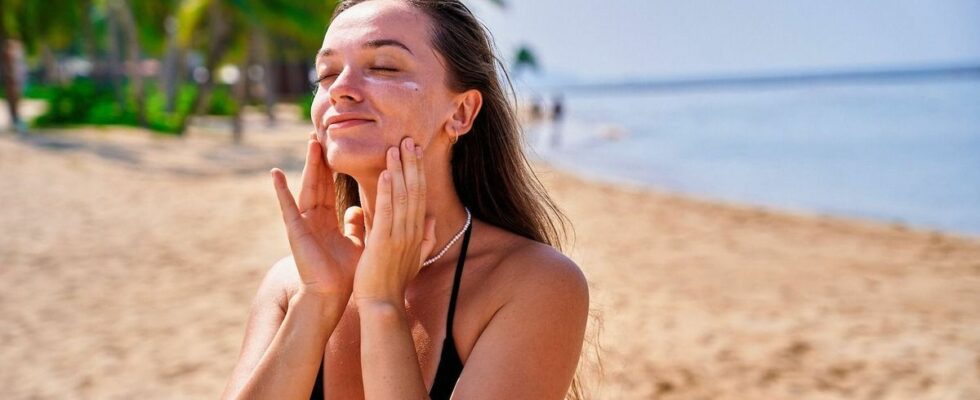Published on
Updated
Reading 4 min.
Although the French look forward to this moment, holidays are not always synonymous with rest. They can even hide unsuspected dangers, when the sun, heat and medications get involved.
The National Agency for the Safety of Medicines and Health Products has released practical advice for dealing with summer risks.
Sun and medications don’t mix well
Summer’s first big enemy: the sun
“Exposure to high heat is an attack on the body. In fact, adaptation to heat involves defense mechanisms whose effectiveness can be reduced or delayed. The most serious complications are the risk of dehydration, heat stroke or even the imbalance of a disease, such as diabetes”, thus recalls the ANSM in its guide.
To avoid heat exhaustion-dehydration syndrome and heat stroke, the Agency also recommends not going out in the sun, but also being particularly vigilant when taking medication.
How to store and transport your medications properly
High temperatures can indeed have “an impact on the use and conservation of health products“. The drug agency gives the following recommendations:
- Follow the storage conditions indicated in the instructions;
- Avoid exposing your medications to direct sunlight;
- Medicines to be stored at a temperature below 25°C or 30°C: you can keep them at home, in their box, and not put them in the sun;
- Medicines to be stored between 2 and 8°C: you must store them in the refrigerator. Once removed from the refrigerator, use them fairly quickly, respecting the dosage indicated by the doctor on the prescription. Avoid leaving them outside for too long;
- For all medicines, except those that are stored in the refrigerator: the agency recommends transporting them in insulated packaging but not refrigerated;
- For medicines usually stored in the refrigerator: the agency recommends transporting them in refrigerated insulated packaging (for example with ice packs), ensuring that they do not freeze;
- Do not expose your medications to high temperatures for too long, even in insulated packaging. Be careful in the trunk or passenger compartment of a car that remains in direct sunlight (even when moving).
Beware of the risks of photosensitization
Some treatments can even cause an immune system reaction (itching, redness, inflammation, etc.) after exposure. A phenomenon that has a name: photosensitivity, an immune system reaction triggered by the sun. There are 2 types of photosensitivity linked to medications:
- There phototoxicity: The drug triggers a painful “sunburn” type skin reaction within a few hours of exposure to the sun’s rays, sometimes with blisters. The location always corresponds to the exposed area. We are talking about:
- Contact photosensitivityif the medicine is used locally on the skin (ointment, cream, etc.). The reaction will occur only on the areas where the medicine is applied;
- Systemic photosensitizationif the medicine is taken systemically (orally or injected). The reaction may occur on all areas exposed by the diffusion of the medicine.
- There photoallergy, true allergic reaction (rarer): It occurs in a patient who is predisposed and already sensitized to the sun by taking the medication. It is the exposure to UV that makes the substance photoallergenic. Then, any re-exposure to the sun while the person is taking the medication, even with minimal doses of UV, causes a photoallergic reaction.
The intensity of the skin reaction depends on the intensity of sun exposure, the medication, the dose administered, as well as the person’s phototype.
When you have to take a medication that exposes you to the risk of photosensitization, you must absolutely avoid exposing yourself to the sun or artificial UV rays. Be aware that exposing your décolleté or hands can be enough to trigger the reaction. Do not hesitate to discuss this issue with your doctor, who may, if necessary, change the prescription to a medication that does not present a risk of photosensitization.
Beware of sunscreen products… which don’t really protect
Another summer danger, highlighted by the ANSM: ignorance (or incorrect use) of sun products (cream, spray, milk or stick).
While some compete in inventiveness to seduce consumers (vanilla scent, attractive packaging, etc.), no sun protection product actually offers “complete protection against solar radiation“, warns the ANSM. The “total screen” claim is therefore false.
As for tanning accelerators (Monoï, milking grease, etc.), they do not provide any protection against UVA and UVB rays.
“These products, accelerators of Sun tanningincrease exposure to UV radiation due to their “magnifying” effect and do not protect the skin from the harmful effects of the sun in the absence of UV filters in their composition. These products therefore lead to risks of overexposure for users and in particular a risk of sunburn. In addition, some “milking greases” may contain allergenic fragrances, which increases the risk associated with their use.“, specifies the Agency.
No to temporary tattoos!
Another bad idea followed by vacationers: getting a temporary tattoo on the beach, such as henna.
“Often done in the summer, these tattoos can cause serious allergic reactions. These reactions occur a few hours or even several weeks after the tattoo is done,” warns the agency.
The right attitude to follow? Refrain from any tattoo when you are not sure of the origin, the composition of the black henna and the absence of added coloring.
If you experience an allergic reaction, consult a healthcare professional.
